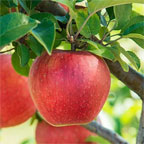- Q.Ornamental Grasses - Can I cut my ornamental grasses? If so, how far from the ground?
- Q.Vigoro Perennial Grass Plants - I live in NH - with harsh winters. I bought Vigor perennial grass plants and didn't plant them in the ...
- Q.Japanese Giant Silver Grass - When should I see growth in spring on Japanese giant silver grass? This is the 2nd year for my Japanese ...
- Q.Planting Cotton Candy Ornamental Grass - I've planted 4 of the above and followed instructions explicitly, to include depth and width of hole, placing the the ...
- Q.Fountain And Pampas Grass Not Growing In Iowa - I planted a grass the first week of June, which is either fountain or pampas, and it is still as ...
- Q.Fountain Grass - Some of my fountain grasses have plumes now (7/26) and others do not. What is the reason for this? I ...
- Q.Big Bluestem Grasses - I live in a region with very sandy soil. We have an abundance of big bluestem grasses in the area. ...
Q.ornamental grasses
Can I cut my ornamental grasses? If so, how far from the ground?
- A.
I think these instructions will apply to any kind of grass you have: https://www.gardeningknowhow.com/ornamental/foliage/fountain-grass/fountain-grass-pruning.htm
Was this answer useful?00
Q.Vigoro perennial grass plants
I live in NH - with harsh winters. I bought Vigor perennial grass plants and didn't plant them in the ground before. Now, in late April, I see no signs of life in any of the plants. Do you think they're dead, or wait a while, way too early to tell? Thanks!
- A.
I would give it some more time. Warm season grasses begin to grow much later in the spring as air and soil temperatures increase, so I wouldn't write off your perennial grass just yet!
For more information on pennisetum, please visit the following link:
https://www.gardeningknowhow.com/ornamental/foliage/fountain-grass/tips-for-care-of-fountain-grass.htmWas this answer useful?00 Q.Japanese Giant Silver grass
When should I see growth in spring on Japanese giant silver grass? This is the 2nd year for my Japanese giant silver grass. There is absolutely no indication of growth yet. It was fine last year. We are zone 5-6 Kris
- A.
I would give it some more time. Warm season grasses begin to grow much later in the spring as air and soil temperatures increase. This is especially the case after a cold, hard winter.
For more information on japanese giant silver grass, please visit the following link:
https://www.gardeningknowhow.com/ornamental/foliage/japanese-silver-grass/japanese-silver-grass-care.htmWas this answer useful?00 Q.Planting cotton candy ornamental grass
I've planted 4 of the above and followed instructions explicitly, to include depth and width of hole, placing the the plant at the proper depth, using Miracle Grow planting soil and proper watering. Two are getting brown, and two are green but not growing. I've planted hundreds of flowers and shrubs. Could you help, and where can I buy more?
- A.
I would do a search for ornamental grass producers and nurseries.
Planting ornamental grasses myself, I have found many varieties quite slow to start off.
Continue to water the new plants, if you do have loss of plant life, most reputable garden centers will replace a plant.
Here are a couple of good articles.https://www.gardeningknowhow.com/special/children/storybook-gardens-for-kids.htm
Was this answer useful?00 Q.fountain and pampas grass not growing in Iowa
I planted a grass the first week of June, which is either fountain or pampas, and it is still as tall as when I bought it. I've lost the marker but I do know it was a taller species. In Iowa we have been getting a lot of rain and only about 4 days in the 80's with sun. I have been adding some miracle grow but isn't helping. Is it not getting enough heat? And how can I get it to grow?
- A.
I am just north of you in Southern MN and I agree, we have not been warm enough for many plants.
Is the soil well draining or are the plants staying soggy? If the ground is not draining the plants could have root rot.
Generally ornamental grasses and Pampas Grass are easy to care for, with little issues.
Give them more time. Watch carefully for signs of insects or disease as damp conditions can invite problems.
https://www.gardeningknowhow.com/ornamental/foliage/ornamental-grass/no-plumes-on-ornamental-grass.htm
https://www.gardeningknowhow.com/ornamental/foliage/pampas-grass/growing-pampas-grass.htmWas this answer useful?00 Q.fountain grass
Some of my fountain grasses have plumes now (7/26) and others do not. What is the reason for this? I live in the Cleveland, OH area.
- A.
I would suspect that some of the clumps are getting less phosphorous than the others. Plants need phosphorous to create their flowers and seeds well (which the plumes are). Try giving the non-pluming plant some bone meal.
If this is an established planting, you may also have some mature clumps while others are still too young to bloom. Like animals, plants need to reach maturity before they can reproduce, so a young plant may not be able to create plumes like older plants can.
Was this answer useful?00 Q.big bluestem grasses
I live in a region with very sandy soil. We have an abundance of big bluestem grasses in the area. Is it possible to take the tops off the plant, which contain seeds, and plant in a different area with simular soil conditions? Or do you need to purchase seeds from a plant company? Thanks for any information you could provide.
- A.
Big bluestem grass seed can be purchased or harvested right from the seed heads. Collect seed heads when they are dry in September to October. Place the seed heads in paper bags in a warm area to dry for two to four weeks. Big bluestem grass should be planted after winter’s worst has passed so you will need to store the seed. Store it for up to seven months in a jar with a tightly sealed lid in a dark room.
For more information on big bluestem grass, please visit the following link:
https://www.gardeningknowhow.com/ornamental/foliage/big-bluestem-grass/big-bluestem-grass-information-and-tips.htmWas this answer useful?00



